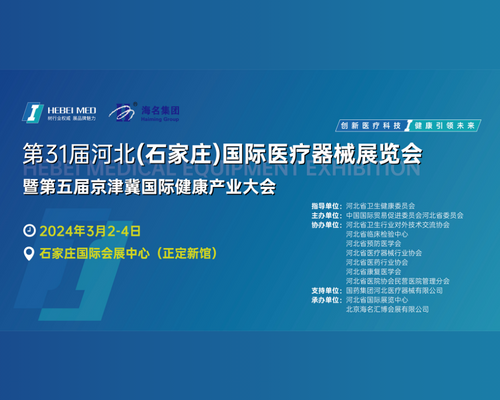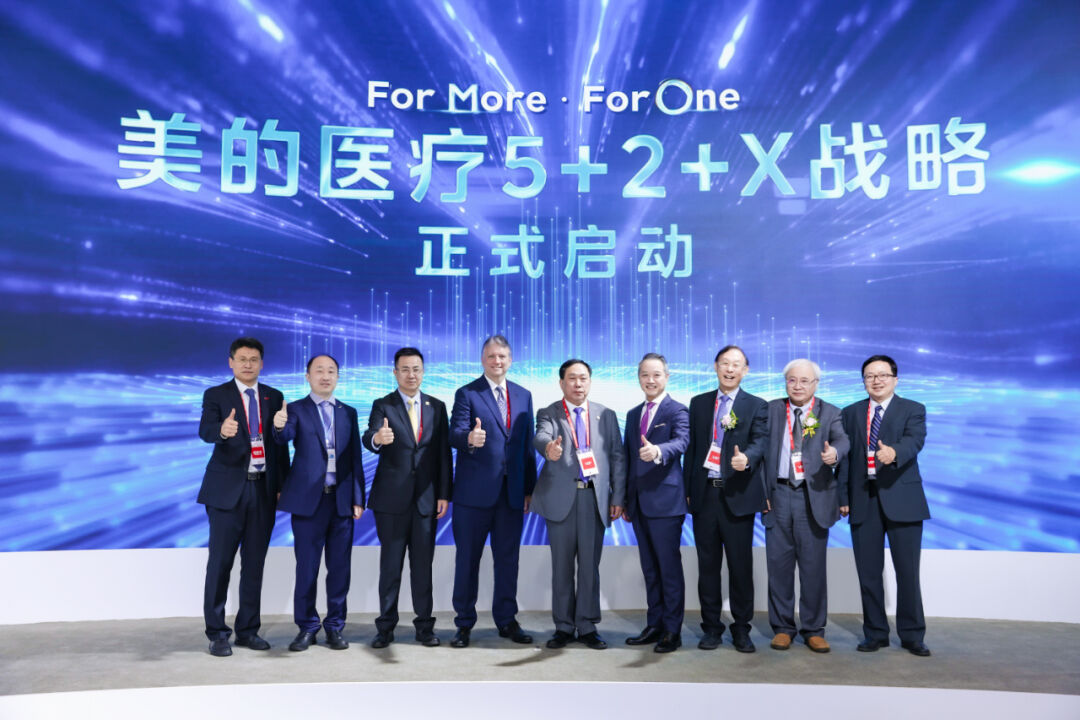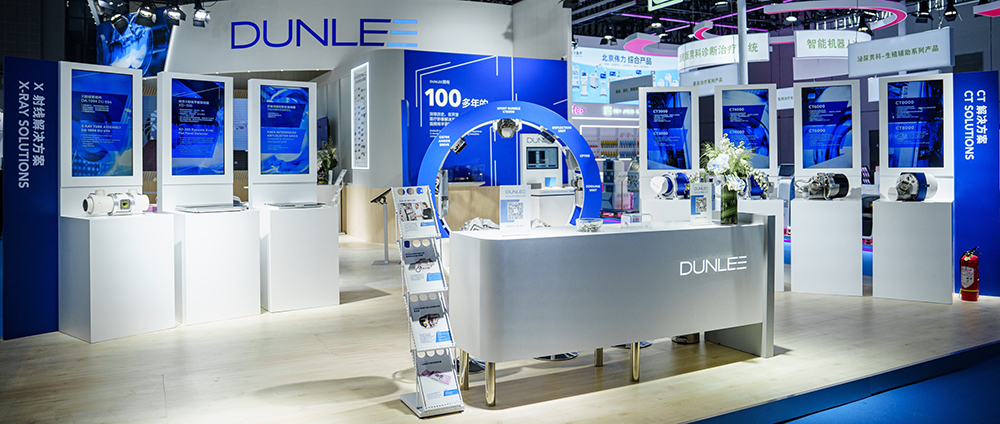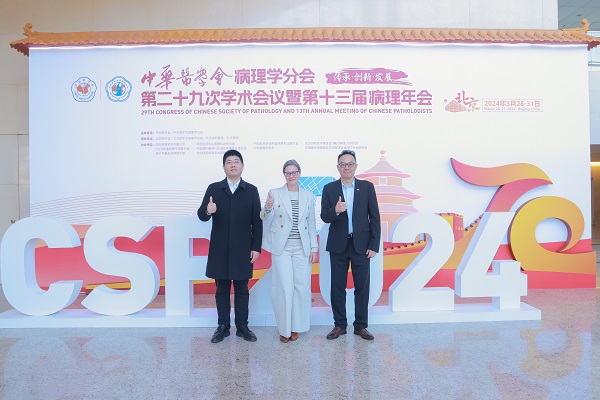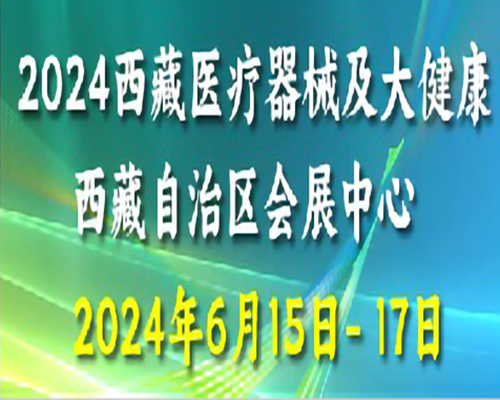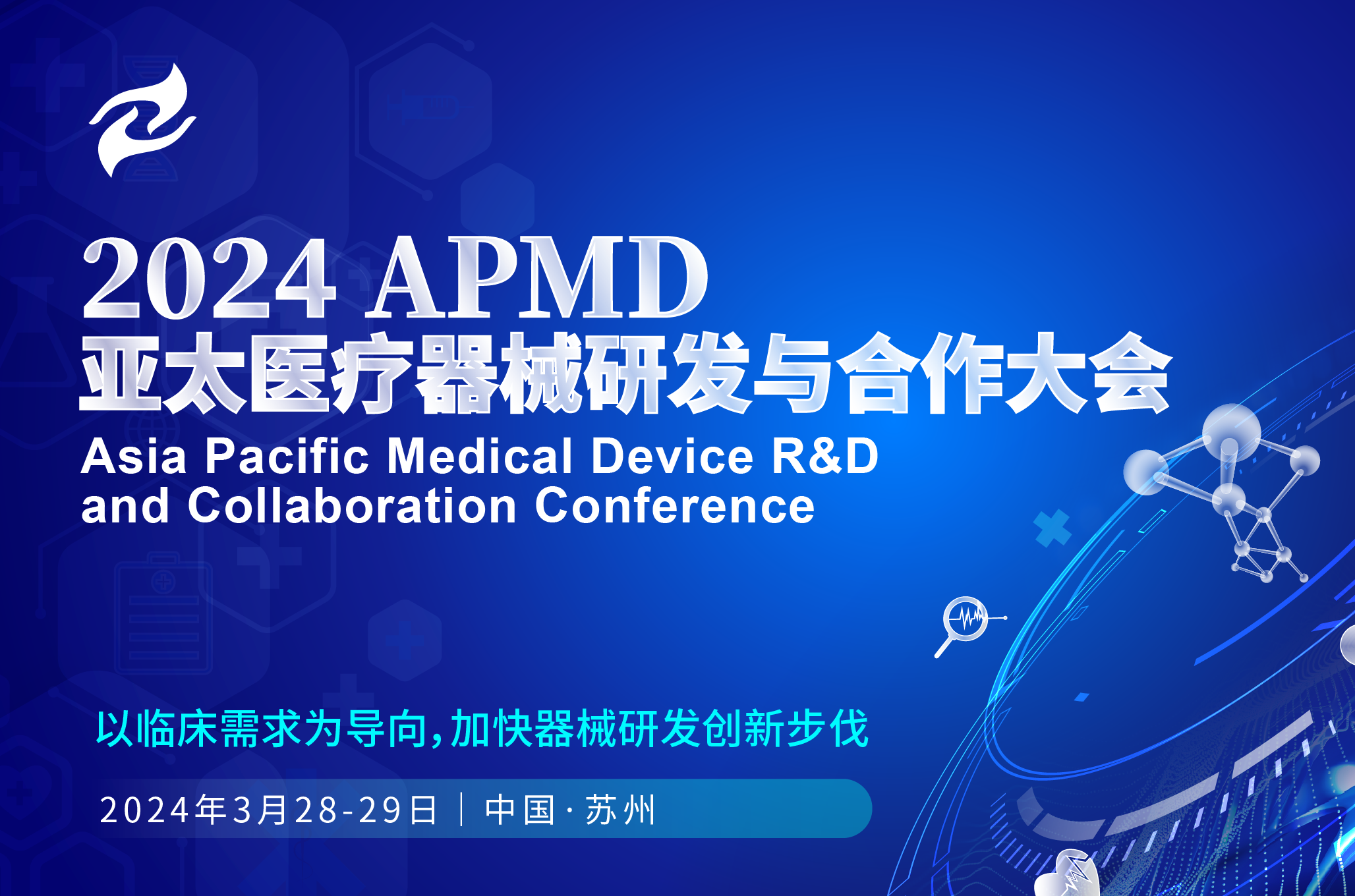MDCG 2020-9
REGULATORY REQUIREMENTS FOR VENTILATORS AND RELATED ACCESSORIES
呼吸机及相关配件的法规要求
This document has been endorsed by the Medical Device Coordination Group (MDCG) established by Article 103 of Regulation (EU) 2017/745. The MDCG is composed of representatives of all Member States and it is chaired by a representative of the European Commission.The document is not a European Commission document and it cannot be regarded as reflecting the official position of the European Commission. Any views expressed in this document are not legally binding and only the Court of Justice of the European Union can give binding interpretations of Union law.
本文件已由法规(EU)2017/745第103条成立的医疗器械协调小组(MDCG)认可。MDCG由所有成员国的代表组成,由欧盟委员会的代表主持。该文件不是欧盟委员会文件,不能视作欧盟委员会的正式立场。本文档中表达的任何观点均不具有法律约束力,只有欧盟法院可以对欧盟法律做出具有约束力的解释。
REGULATORY REQUIREMENTS FOR VENTILATORS AND RELATED ACCESSORIES
呼吸机及相关配件的法规要求
Options for supporting production and/or placing on the market of ventilators in the context of COVID-19 pandemic
在COVID-19流行的背景下支持呼吸机生产和/或投入市场
01
INTRODUCTION AND SCOPE
介绍和范围The World Health Organization (WHO) declared the COVID-19 outbreak a pandemic on March the 12th 2020. Patients infected by SARS-CoV-2 virus and developing the COVID-19 disease with acute and severe respiratory symptoms have to be treated with mechanical ventilators to assure possibilities of survival.
世界卫生组织(WHO)于2020年3月12日宣布COVID-19爆发。感染SARS-CoV-2病毒并发展成急性、严重呼吸道症状的患者必须使用呼吸机进行治疗,以保证存活的可能性。
This guidance document focuses on ventilators and related accessories that are currently regulated under the Council Directive 93/42/EEC (MDD)1. According to the MDD, devices may be placed on the market and/or put into service only if they comply with the requirements laid down in this Directive when duly supplied and properly installed, maintained and used in accordance with their intended purpose2.
本指导文件重点介绍目前受欧盟理事会指令93/42 / EEC(MDD)监管的呼吸机和相关配件。根据MDD,只要它们根据预期用途妥善提供,正确安装、维护和使用符合指令的要求,就可以投放入市场和/或使用。
The devices must meet the essential requirements set out in Annex I of the MDD, which apply to them, taking account of the intended purpose of the devices concerned. In addition, devices may be placed and circulate on the European single market if they have been subject to a conformity assessment in accordance with the provisions of Article 11 of the MDD.
考虑到相关器械的预期用途,这些器械必须满足MDD附件I中列出的基本要求。此外,如果器械已经按照MDD第11条规定进行了合格评定,则可以在欧洲单一市场上出售和流通。
Under the current COVID-19 context, the demand for ventilators and related accessories has rapidly increased. Therefore, this document intends to outline the different regulatory options for placing these devices on the EU market indicating their feasibility to allow short-term supply.
在当前COVID-19背景下,对呼吸机和相关配件的需求迅速增长。因此,本文档旨在概述这些器械投放到欧盟市场的不同监管选择,表明短期供应的可行性。
02
TYPES OF MEDICAL DEVICES AND THEIR PARTS/COMPONENTS
医疗器械及其零件、组件的分类
2.1. Ventilators
呼吸机
Ventilators are breathing support devices and can fall into different types according to their intended use and characteristics3:
呼吸机是呼吸支持器械,可根据其预期用途和特点分为以下三种类型:
麻醉呼吸机:为通过呼吸系统麻醉而设计Ventilators for critical care are usually invasive, which enables the ventilator machine to provide lung support for inspiration and expiration through tracheal intubation. However, most critical care ventilators allow non-invasive ventilation modes for critical care patients as well. Ventilators for non-critical care are usually non-invasive and therefore provide air pressure support to natural breathing through e.g. a facemask.用于重症监护的呼吸机通常是侵入式的,这使呼吸机能够通过气管插管为吸气和呼气提供肺部支持。但是,大多数重症监护呼吸机也允许重症监护患者使用无创通气模式。用于非重症监护的呼吸机通常是非侵入性的,因此可以为自然呼吸提供气压支持,如通过面罩。
Ventilators may offer different types of additional complementary functions that include:呼吸机可能提供不同类型的其它补充功能,包括:□High flow oxygen supply (nasal high flow therapy);□Monitoring systems;□Nebulisation systems.□高流量供氧(鼻高流量氧疗);□监控系统;□雾化系统。
2.2.Accessories配件
Ventilators need to be “connected” to the patients through dedicated accessories4 to the ventilator that allow the machine to support the patient’s breathing; therefore, it is important to proof compatibility with the ventilator(s). These accessories can be placed on the market individually and usually fall into one of the following categories:呼吸机需要通过专门的配件与患者“连接”,使机器帮助患者的呼吸。因此,配件是否能与呼吸机兼容尤为重要。这些配件可以单独投入市场,通常属于以下类别之一:□ Breathing systems and circuits, such as:呼吸系统和线路,如:o Circuits;线路o Connections/Adapters;连接件/适配器o Tubes;管路o Nasal cannulas for O2;氧气鼻导管o Masks or helmets for non-invasive ventilation;无创呼吸头盔或面罩o Air compressors;空气压缩机
□Nebulizers;雾化器;□Humidifiers and filters;加湿器和过滤器;□Monitoring accessories, including alarms, in-built safety features.监控附件,包括警报、内置的安全功能。
Accessories are provided either disposable or reusable and are treated as medical devices in their own right5.提供的配件既可以是一次性使用的也可以是重复使用的,并且其本身就被视为医疗器械。
2.3.Parts or components零件或组件
Parts or components of medical devices that do not qualify as accessories are generally not considered medical devices and thus not requiring themselves to be CE marked according to the MDD (e.g. expiratory valves or flow sensors).不符合配件条件的医疗器械零件或组件通常不被视为医疗器械,因此不需要根据MDD(例如呼气阀或流量传感器)对其进行CE标记。
03
CLASSIFICATION
分类
There are different types of ventilators depending on the degree of invasiveness and the setting in which they are used in (e.g. Intensive Care Unit - ICU). Ventilators fall under two different classes in accordance with rule 11 (or rule 9) of Annex IX6,7 to the MDD:呼吸机的类型取决于侵入程度和使用的环境(例如重症监护病房-ICU)。根据MDD附件IX条例11(或条例9),呼吸机分为两个不同的类别:
- Class IIa: only applicable to non-invasive devices, e.g. continuous positive airway pressure – CPAP non-intended for critical care, or devices that only support spontaneous breathing.IIa类:仅适用于非侵入式器械,例如,持续气道正压(CPAP)不适用于重症监护,或仅支持自发呼吸的器械。
- Class IIb: applicable to most ventilators.IIb类:适用于大多数呼吸机
The classification depends on the intended purpose of the ventilator and has important implications in the selection of appropriate conformity assessment procedure(s) for the device including timing and complexity (see section 4 for details).分类取决于呼吸机的预期用途,并且在为器械选择适当的合格评定程序方面具有重要意义(有关详细信息,请参见第4节)。
3.2. Accessories配件
Accessories are classified in their own right usually in accordance with rule 2 or 5 of Annex IX to the MDD, under Class I, IIa or IIb.配件通常根据MDD附件IX的条例2或5在I,IIa或IIb类下按其本身分类。
3.3.Impact of classification on conformity assessment分类对合规评定的影响
Given that ventilators are classified as Class IIa or Class IIb, and accessories (except for Class I non-sterile and without measuring function), will in principle need the involvement of a notified body prior to their placing on the market. Other options for the placing on the market are provided in section 4 for both ventilators and accessories.鉴于呼吸机被分类为IIa类或IIb类(包括除I类非无菌且不具备测量功能之外的配件),原则上需要公告机构在其投入市场前参与。第4部分为呼吸机和配件投放市场提供了其它选项。
04
REGULATORY OPTIONS FOR PLACING VENTILATORS ON THE MARKET
呼吸机上市的法规选项In the context of the COVID-19 outbreak, several industries have expressed their willingness to support and scale up the production of ventilators8. There are different regulatory options9 available for supporting production or placing on the market of ventilators. These options are presented below, ordered by feasibility, to allow a swift supply in the current context.在COVID-19爆发的背景下,一些行业愿意支持和扩大呼吸机的生产。有不同的法规选择可用于支持呼吸机的生产或投放市场。下面列出并按可行性排列了这些选项。
4.1.Supplying parts, components or the finished devices to medical devices manufacturers currently placing on the market ventilators向目前投放市场呼吸机的制造商提供零件,组件或成品器械
When the legal manufacturer10 has already undergone a conformity assessment for the ventilator, has obtained a certificate and is lawfully placing ventilators on the market under its own name, other producers (e.g. not currently working in the medical devices field) can support its production. Such producers can provide parts or components, or the finished device, therefore becoming suppliers or subcontractors of this manufacturer.当合法制造商已对呼吸机进行合格评定,获得认证并合法地以自己的名义将呼吸机投放市场时,其他生产商(例如当前不涉及医疗器械领域生产商)可以支持其生产。这样的生产商可以提供零件或组件,或者成品器械,成为该制造商的供应商或分包商。
Given that the medical devices sector is highly regulated and complex, leveraging the knowledge and responsibilities of an already established manufacturer of ventilators could be the least burdensome and fastest option to scale up the production of ventilators.鉴于医疗器械行业受到高度监管和其复杂性,因此,依靠已经建立知识和职责的呼吸机制造商,是扩大呼吸机生产规模的负担最小,最快的选择。
4.1.1.Producers supplying parts or components to medical devices manufacturers currently placing on the market ventilators生产商向目前投放市场的呼吸机的医疗器械制造商供应零件或组件
Manufacturers of medical devices can have many suppliers, which in case of quality system certification are qualified, approved and controlled by the manufacturer. These suppliers may need to be assessed by a notified body as part of the conformity assessment procedure on the basis of their criticality and the manufacturer’s process in place to control suppliers and the verification of purchased products11. When the manufacturer wishes to use an additional supplier, this might need to be communicated in advance to the notified body.医疗器械制造商可以有多家供应商,在质量体系认证的情况下,这些供应商是合格的,且由制造商认可和控制的。这些供应商可能需要公告机构对它们进行评估,作为基于制造商控制供应商的流程,以及所买产品的验证的合格评定程序的一部分。如果制造商希望使用其它供应商,则要事先通知公告机构。 4.1.2. Producers manufacturing the ventilator itself for the medical device manufacturer currently placing on the market ventilators为目前投放市场的呼吸机制造商制造呼吸机的生产商
Manufacturers of medical devices producing ventilators may provide the specifications of a ventilator (e.g. current or older/simpler design) including parts of the technical documentation to a producer that becomes its subcontractor. The producer will manufacture the ventilator but the medical device manufacturer will keep its role of legal manufacturer according to the MDD.生产呼吸机的医疗器械制造商可以向成为其分包商的生产商提供呼吸机的规格(如,当前或更早版本/更简单的设计),包括技术文档的一部分。生产商将可以制造呼吸机,但医疗器械制造商需根据MDD保持其合法制造商的角色。
The legal manufacturer of the ventilator, which holds a quality system certification, qualifies, approves and controls the subcontractor that will need to be assessed by a notified body as part of the conformity assessment procedure. When the manufacturer wishes to use an additional subcontractor, this will need to be communicated in advance to the notified body (i.e. as the subcontractor is considered critical11) that will assess the available information and will decide the actions to be put in place e.g. whether or not it is necessary to carry out an (on-site12) audit.呼吸机的合法制造商持有的质量体系认证,对分包商进行资格认证、批准和控制,将作为合格评定程序的一部分,该分包商需要由公告机构进行评估。当制造商希望使用其它的分包商时,需要事先通知公告机构,该机构将评估可用信息并决定将采取的措施,例如是否有必要进行(现场)审核。
Alternatively, the manufacturer of medical devices could also follow other conformity assessment routes such as the EC type-examination, as established in Annex III to the MDD, and/or EC verification, as established in Annex IV to the MDD (these routes are elaborated in 4.3.2).或者,医疗器械制造商也可以遵循其他合格评定途径,例如MDD附件III中确定的EC类型检查和/或MDD附件IV中确定的EC验证(在4.3.2中详细说明了这些路径)。
4.2. Derogation procedure – placing on the market authorised by the relevant authorities of one Member State in the interest of public health简单上市(Derogation)程序–一个成员国的有关部门因公共健康利益而授权投放市场
The relevant authority of one Member State may decide to authorise the placing on the market of devices in the interest of protection of health, even if the applicable conformity assessment procedures have not been finalised or initiated ('national derogation').即使尚未最终确定或未启动适用的合格评定程序,一个成员国的有关当局仍可决定授权将器械投放市场以保护公共健康。
In view of the epidemiological context as well as the exponential growth in demand for medical devices, the Commission has published a Guidance on medical devices, active implantable medical devices and in vitro diagnostic medical devices in the Covid-19 context.考虑到流行病背景以及对医疗器械需求的指数级增长,委员会发布了《Covid-19环境下的医疗器械、有源植入式医疗器械和体外诊断医疗器械指南》。
Question 5 of this guidance provides information on the derogation procedures for medical devices which is established in Article 11(13) of the MDD. In particular, the guidance specifies that the Covid-19 context warrants the application of such derogations.该指南的问题5提供了有关MDD第11(13)条规定的医疗器械简单上市程序的信息,指南在Covid-19背景下应保证此类简单上市的适用。
By amendment of 23 April 202013, Article 59(1) of Medical Devices Regulation (EU) 2017/745 (MDR) empowers Member States to adopt national derogations under both the MDD and the MDR from the date of entry into force of that amendment.《医疗器械法规》(EU)2017/745(MDR)第59(1)条于2020年4月23日作出修订,授权成员国自该修正案生效之日起根据MDD和MDR采取简单上市。
The relevant competent authority of the Member State in this case authorises the placing on the market within its territory and can also organise the purchase.在这种情况下,成员国的相关主管当局可授权在其国家内投放市场,也可以组织购买。
In practice, this implies that each competent authority would need to assess whether the products produced by the manufacture provides an adequate level of safety in respect to the applicable legal requirements. The assessment procedures can vary among Member States and in some cases will involve the support of third parties (e.g. testing laboratories).实际上,这意味着每个主管当局都需要评估制造商生产的产品是否在适用的法律要求方面提供了足够的安全水平。评估程序可能因成员国而异,在某些情况下还需要第三方(如检测实验室)的支持。
In the exceptional COVID-19 context, the assessment procedures will ensure a short- term supply while guaranteeing patient safety14. The Member State will evaluate the available technical documentation to find evidence that essential performance and safety requirements are guaranteed in the context of use. In particular, the role of healthcare teams and health facilities is essential to allow a rational use and a continuous assessment of these crisis solutions.在特殊的COVID-19环境中,评估程序将在确保患者安全的同时保证短期的供应。成员国将评估可用的技术文档,以找到证据证明在使用过程中可以保证基本性能和安全要求。医疗团队和医疗机构的作用对于合理使用和持续评估危险至关重要。
Once this assessment is performed, the authority has to take a decision, whether or not the respective device produced by the manufacturer may enter the national territory of the Member State. Competent authorities should inform the Commission and their counterparts in other Member States of any temporary agreement they have granted to specific devices.评估完成后,主管部门必须做出决定,制造商生产的相应器械是否可以进入成员国的本国领土。主管当局应将它们已授予特定器械的所有临时协议通知委员会及其其它成员国的对口单位。
In addition, Article 59(3) of the MDR empowers the Commission to extend, in exceptional cases relating to public health or patient safety or health, by means of implementing acts, for a limited period of time the validity of a national derogation, granted by a Member State under the MDD or the MDR, to the territory of the Union and set the conditions under which a device may be placed on the market or put into service. This allows the Commission and the Member States to address potential shortages Union wide of vitally important medical devices in an effective manner.此外,MDR第59(3)条授权欧盟委员会在与公共卫生或患者安全或健康有关的特殊情况下,可以通过实施法案在有限的时间内将国家“简单上市”的效力延长。由成员国根据MDD或MDR移至欧盟领域,并设定器械可投放市场或投入使用的条件。这使委员会和成员国能够有效地解决潜在的医疗器械短缺。
Timing to obtain a national derogation by a competent authority will greatly depend on the quality and adequacy of the evidence provided by the manufacturer. When technical documentation and evidence of safety of performance is adequate, this can be a feasible option to ensure short-term supply.由主管当局获得国家“简单上市”的时间将在很大程度上取决于制造商提供的证据的质量和充分性。技术文件和性能安全的证据充分,是确保短期供应的可行选择。
4.3. Manufacturing of the finished device by a producer that was not previously placing on the market ventilators由先前未投放市场的生产商制造成品器械
If the ventilator is entirely manufactured by a producer that decides to place it on the market under its name, such producer will become the legal manufacturer in its own right. This means that the manufacturer will need to fulfil all requirements of the MDD (e.g. including the need to draw up the technical documentation and clinical evaluation related to the ventilator, and to establish and keep up to date a systematic procedure to review experience gained from devices in the post-production phase).如果呼吸机完全由一个决定以其自己名义投放市场的生产商制造,该生产商将以其自身的权利成为合法制造商。这意味着此制造商需要满足MDD的所有要求(例如,需要起草与呼吸机相关的技术文件和临床评价,以及建立并保持最新的系统程序来回顾在生产后阶段从器械中获得的经验)。
The manufacturer who places the finished CE marked ventilator on the market under its own name needs to ensure that the device complies with the essential requirements (established in Annex I of the MDD) and provide relevant evidence. A notified body will be involved in the conformity assessment in all cases.以自己的名义向市场投放有CE标志的成品呼吸机的制造商需要确保器械符合基本要求(MDD附录I中规定)并提供相关证据。在所有情况下,公告机构都将参与合格评定。
Given that the medical devices sector is highly regulated and complex, the scenarios presented below will be the most burdensome and therefore only applicable to increase supply in the medium-long term.鉴于医疗器械行业监管严格及其复杂性,下文所述情景将是最繁重的,仅适用于增加中长期的供应。
4.3.1. Medical devices manufacturers’ not currently producing ventilators request an extension of their product range.当前没有未生产呼吸机医疗器械制造商,要求扩展他们的产品范围
This option is available for medical devices manufacturers currently certified. It includes, for instance, medical devices manufacturers already holding a full quality management system certificate under Annex II to the MDD for other devices and wishing to add ventilators to their certification. They could seek the support from (non-medical devices) producers to act as subcontractors and extend the scope of their certificate.此选项适用于当前已认证的医疗器械制造商。例如,包括已经根据MDD附件II持有针对其它器械的完整质量管理体系证书,并且希望在其认证中增加呼吸机的医疗器械制造商。他们可以寻求(非医疗器械)生产商的作为分包商并扩展其认证的范围。
From a procedural point of view, the medical devices manufacturer may produce the ventilator itself or may utilise a subcontractor (i.e. producer linked or not to the medical devices field). In the latter case, the manufacturer will qualify, approve and control the subcontractor that will be assessed by the notified body as part of the conformity assessment procedure. When the manufacturer wishes to use an additional subcontractor, this will need to be communicated in advance to the notified body (i.e. as the subcontractor is considered critical11) that will assess the available information and will decide the actions to be put in place e.g. whether or not it is necessary to carry out an (on- site12) audit.从程序的角度看,医疗器械制造商可以自己生产呼吸机,也可以利用分包商(即与医疗器械领域有关联或没有关联的生产商)。在后一种情况下,制造商将认证、批准和控制由公告机构评估的分包商,作为合格评定程序的一部分。当制造商希望使用额外的分包商时,需要事先通知公告机构,该机构将评估信息并将采取的措施,例如 是否有必要进行审核。
Most importantly, the manufacturer will need to request an extension of the product range from its notified body. The notified body will assess the available information in relation to the new product (that include an assessment of the technical documentation and clinical evaluation) and update the certificate.最重要的是,制造商将需要从其公告机构那申请扩展产品范围。公告机构将评估与新产品有关的信息(包括对技术文档和临床评价的评估)并更新认证。
The manufacturer of medical devices could also use other conformity assessment routes such as the EC Type-Examination and EC Verification and testing of every product under Annex III and IV respectively (these routes are elaborated in section 4.3.2).医疗器械制造商还可以使用其它合格评定途径,例如分别根据附件III和IV对每种产品进行EC类型检查和EC验证以及测试(这些途径在4.3.2部分中进行了详细说明)。
4.3.2. Ventilator manufactured entirely by a producer that is not currently a legal manufacturer under the MDD完全由目前不是MDD合法制造商的生产商制造的呼吸机
Producers that do not currently qualify as legal manufacturers under the MDD and decide to place ventilators on the market under their own name need to be aware of all the legal requirements for manufactures under the MDD. It is important to mention that in the field of medical devices some Member States could have additional requirements, for instance, the need to authorise the facility of the medical device manufacturer prior to starting production.当前MDD下未能成为合法制造商并决定以自己的名义将呼吸机投放市场的生产商需要了解MDD下制造商的所有法律要求。值得一提的是,在医疗器械领域,一些成员国可能有其他要求,例如,在开始生产之前需要对医疗器械制造商的设施进行授权。
In addition to this, the involvement of a notified body will depend on the classification. In particular:除此之外,公告机构的参与将取决于分类。特别是:
1. Class IIa ventilators can follow the following routes established in the relevant Annexes of the MDD:IIa 类呼吸机可以遵循MDD相关附件中确定的以下途径
a. Annex II (excluding point 4) – which involves the assessment of the full manufacturer’s quality management system. This will require an on-site audit (which may be performed remotely in the current context) andregular surveillance audits at least annually. In addition, the notified body will assess the technical documentation and the clinical evaluation of the product to be certified prior to certification on a sampling basis15.附件II(第4点除外)–涉及对制造商整个的质量管理体系的评估。这将需要至少每年一次的现场审核(在当前情况下可以远程执行)和定期的监督审核。此外,公告机构将在认证前的进行产品技术文档评估和临床评价评估。
b. Declaration of conformity (Annex VII) combined with either an assessment of the quality assurance of the production or of the product (Annex V or VI) or a EC verification (set out in Annex IV):符合性声明(附件VII)与生产或产品质量保证评估(附件V或VI)或EC验证(附件IV中列出)相结合:□ The assessment of the quality system performed by the notified body will be similar to the one outlined in section 1.a above.公告机构对质量体系的评估将与上文第1.a部分概述的评估类似。
□ The verification by testing of products by the notified body will be performed by examination and testing of every product.公告机构对产品测试的验证将通过检查和测试每个产品来进行。
2. Class IIb ventilators can follow the following routes:IIa 类呼吸机可以遵循以下途径
a. Annex II (excluding point 4) – which involves the assessment of the full manufacturer’s quality management system. This will require an on-site audit (which may be performed remotely in the current context) and regular surveillance audits at least annually. In addition, the notified body will assess the technical documentation and the clinical evaluation of the products to be certified prior to certification on a sampling basis15.附件二(第4点除外)–涉及对整个制造商的质量管理体系的评估。这将需要至少每年一次的现场审核(在当前情况下可以远程执行)和定期的监督审核。此外,公告机构将在认证前的进行产品技术文档评估和临床评价评估。
b.EC type-examination (Annex III) combined with either an assessment of the quality assurance either of the production or of the product (Annex V or VI) or EC verification by testing of products (set out in Annex IV). EC Type-examination consists in the assessment of the technical documentation and testing of a number of features of the device type to ensure it conforms to the requirements. The additional procedures (Annex IV, V or VI) are the same as the ones described in 1.b above.EC类型检查(附件III)与生产或产品的质量保证的评估(附件V或VI)或通过对产品的测试进行EC验证相结合(见附件IV)。EC类型检查包括评估技术文档和测试器械类型的多个功能,以确保其符合要求。附加程序(附件IV,V或VI)与上述1.b中描述的程序相同。The assessment of the quality management system of the manufacturer (Annex II, V and VI) can be partly fulfilled by compliance with a harmonised standard (EN ISO 13485) but this route will unlikely be fast enough to ensure short-term supply. This is due to the timelines and experience required to get a certificate under these annexes of the MDD and taking into account the current circumstances where auditing capacity is restricted by the Covid19 situation.可以通过遵守统一标准(EN ISO 13485)来完成对制造商质量管理体系(附件II,V和VI)的部分评估,根据MDD的相关附件获得证书所需的时间和经验,并考虑到当前Covid19情况限制了审查能力,这种方法不能迅速地确保短期供应。。
A faster route but also time-consuming route will probably be the performance of tests on the products that might be combined with the assessment of the technical documentation, namely:一个更方便但更耗时的途径可能是将产品的性能测试与技术文档的评估相结合,即: - declaration of conformity (Annex VII) + verification of products (Annex IV) for Class IIa; orIIa的类符合性声明(附件VII)+产品验证(附件IV);或
- EC type-examination (Annex III) + verification of products (Annex IV) for Class IIb. IIb类的EC类型检验(附件III)+产品验证(附件IV)。
Through this route, the device type or device samples are tested and there is no obligation to have a certified quality management system in place and subject to regular surveillance audits. However, quality management processes are important and critical to the production of safe and functional medical devices. The conformity assessment will be based on the manufacturers testing strategy that must ensure compliance with the safety and performance requirements.通过此途径,将对器械类型或器械样本进行测试,并且没有义务建立经过认证的质量管理体系并接受定期的监督审核。但是,质量管理过程对于生产安全且功能齐全的医疗器械至关重要。合格评定将基于制造商的必须符合安全和性能测试策略。
It should be noted that this option is burdensome and will take several months, especially to draw up an adequate technical documentation. In addition, there is only a limited number of notified bodies designated to perform EC type-examination and/or EC verification in ventilators (according to NANDO16 18 notified bodies out of 56 are authorised to perform these tests at the moment).应当指出,这种选择及其麻烦,且需要数个月的时间,尤其是要准备一份合格的技术文档。此外,只有少数指定的公告机构可以在呼吸机中执行EC类型检查和/或EC验证(根据NANDO16的规定,目前56个公告机构中有18个公告机构可以执行这些测试)。
https://ec.europa.eu/growth/tools-databases/nando/index.cfm?fuseaction=directive.notifiedbody&dir_id=13





